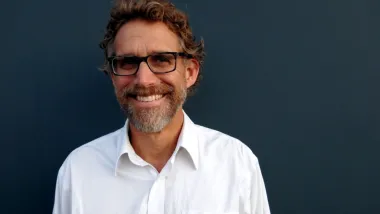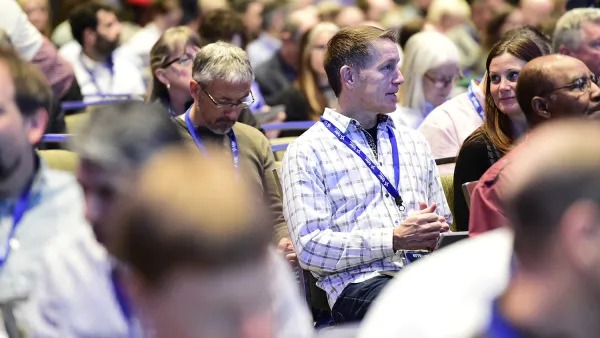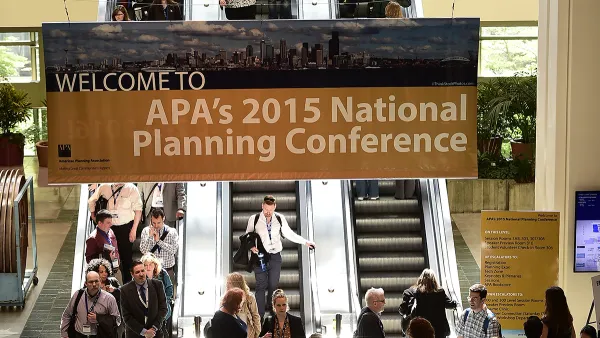Typically I have fallen into the “every day is earth day” camp. But this year, April 22nd offered a moment for reflection, although of a more professional than personal nature.Green is everywhere these days – from Vanity Fair to the Wall Street Journal. The decades long debate about the validity of climate change appears to be over – as the discussion seems to be quickly shifting to either: a) how do we make it less dramatic, or b) how we prepare for the inevitable.
Typically I have fallen into the "every day is earth day" camp. But this year, April 22nd offered a moment for reflection, although of a more professional than personal nature.
Green is everywhere these days – from Vanity Fair to the Wall Street Journal. The decades long debate about the validity of climate change appears to be over – as the discussion seems to be quickly shifting to either: a) how do we make it less dramatic, or b) how we prepare for the inevitable.
Some of the design professions have stepped up to the challenge. Most notably the American Institute of Architects (AIA), announced the 2010 Imperative last year, which calls for architects to implement an immediate 50% reduction in hydrocarbon-based energy use in buildings and sets the challenge of a 100% reduction by 2030. At the 2006 GreenBuild this past November in Atlanta, the US Green Building Council made energy and carbon reductions a centerpiece of the opening day announcements. USGBC is also at the brink of launching the pilot for its newest LEED offering – LEED for Neighborhood Developments – in collaboration with the Congress for New Urbanism and the Natural Resources Defense Council (serving in this instance as a unifier of the smart growth community). At the local political level, the US Congress of Mayors now has 453 mayors from the 50 states and DC signed onto the Climate Protection Agreement. Clearly, these are clearly important and inspired steps in the right direction.
But in the growing discourse about climate and urban development the American Planning Association is strangely absent. Rather than joining the visionaries, the APA appears to be taking a cautious position on the periphery, happy to be a "supporting partner" or "co-sponsor" but is neither putting forth a bold initiative of its own or stepping in to help the visionaries implement the vision. This is disappointing, as many of the people I respect the most are planning school graduates and proud to be part of the profession, including some like myself who have gone as far as joining the ranks of the AICP.
The situation may be changing, although not likely quickly enough. In recent years the APA has published guides on sustainability and energy efficiency in planning. And I was invited to a brainstorm session on "Planning a New Energy Future" this past February put together by the APA and the Environmental and Energy Study Institute (EESI). Although unable to attend, due to a combination of bad weather at O'Hare and under the weather kids at home, the notes from the meeting show promise if in nothing more than a commitment by the attendees to continue to collaborate.
Still, an overarching vision is lacking. So, for Earth Day 2007, I've decided to propose the 2030 Planning Challene, which sets the goal of reducing green house gas emissions related to fundamental patterns of land use, transportation, and infrastructure by 50% by 2015 and 100% by 2030. I propose that this effort be led by my professional organization – the APA.
How do we achieve this? Determining exactly how will require the full creative capacity of the planners in the US and globally, but the options are many: dense, transit-oriented, and car independent neighborhoods; energy smart strategies to retain, store, purify, and distribute water; cutting the energy associated with waste management by eliminating the concept of waste and cradle to cradle thinking; and embracing diversity (of uses, transportation modes, ways to work, cultures ) as opposed to the decades-long infatuation with hierarchy and segregation.
Responding to this challenge is essential to the future relevance and viability of the planning profession. I hope we can rise to the occasion.

Analysis: Cybertruck Fatality Rate Far Exceeds That of Ford Pinto
The Tesla Cybertruck was recalled seven times last year.

National Parks Layoffs Will Cause Communities to Lose Billions
Thousands of essential park workers were laid off this week, just before the busy spring break season.

Retro-silient?: America’s First “Eco-burb,” The Woodlands Turns 50
A master-planned community north of Houston offers lessons on green infrastructure and resilient design, but falls short of its founder’s lofty affordability and walkability goals.

Test News Post 1
This is a summary

Analysis: Cybertruck Fatality Rate Far Exceeds That of Ford Pinto
The Tesla Cybertruck was recalled seven times last year.

Test News Headline 46
Test for the image on the front page.
Urban Design for Planners 1: Software Tools
This six-course series explores essential urban design concepts using open source software and equips planners with the tools they need to participate fully in the urban design process.
Planning for Universal Design
Learn the tools for implementing Universal Design in planning regulations.
EMC Planning Group, Inc.
Planetizen
Planetizen
Mpact (formerly Rail~Volution)
Great Falls Development Authority, Inc.
HUDs Office of Policy Development and Research
NYU Wagner Graduate School of Public Service




























